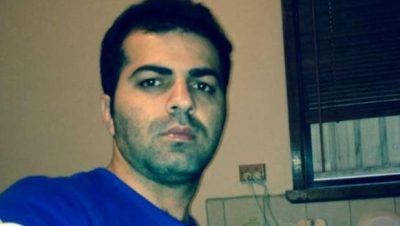Australia’s Refugee Transit Centre on Manus Island: The Fate of Hamed Shamshiripour

Featured image: Iranian asylum seeker Hamed Shamshiripour was found dead on Manus Island on 7 August, 2017. (Source: Stuff.co.nz)
“The only responsible and humane thing for our government to do is immediately evacuate every single man on Manus, every single family and child on Nauru to safety on Australia.” – Daniel Webb, Human Rights Law Centre, Aug 7, 2017
Murder comes in various forms. It can be directly inflicted. It can be willed and directed from afar. It can also be the consequence of conditions planned, fostered, enacted. This sequential logic results in one dark conclusion: Australian refugee policy, spearheaded by the dreary, monotone immigration minister, Peter Dutton, is murderous. At the very least, it suggests complicity in manslaughter.
The gulag recipe for treating refugees and asylum seekers was always going to be an exercise in carceral brutality, a democratic state’s totalitarian alternative. Anyone familiar with the basic texts of criminology would have had a nodding acquaintance with the effects of incarceration, notably on those who did not, in fact, commit any crime. And here, the populations on Manus Island and Nauru face the sense of being punished for crimes they did not commit.
In the case of Manus, another dimension has come into play. The imminent closure of the rogue Australian outpost, funded by the Australian tax payer and deemed illegal by the Papua New Guinea Supreme Court, has sent various asylum seekers into a state.
A situation of disturbance has been compounded, heaped upon by diplomatic machinations. The US-Australia refugee deal, mocked and derided by US president Donald Trump, haunts detainees. As does the prospect of resettlement in another country, most likely one hostile and ill-suited.
One of these broken figures was the late Hamed Shamshiripour, who on Monday was found dead in the vicinity of East Lorengau refugee transit centre on Manus Island after having gone missing on Saturday.
In the aftermath, police were already clear: the death was occasioned by suicide. But Inspector David Yapu initially confirmed that a crime scene had been declared, a point at odds with Papua New Guinea police commissioner Gary Baki. The body sported wounds, though news outlets seemed short on detail. Another outlet, news.com.au, noted that he had been “found hanging from a tree”.[1] Shamshiripour’s family, sensing another hand in this, have demanded an autopsy followed by an inquest into the cause, timing and circumstances of his demise.[2]
His state had caught the eye of those working on Manus, not to mention a few detainees themselves. The eloquent Behrouz Boochani, an Iranian refugee and journalist held in the improvised prison since 2013, emitted on Twitter that a letter had been sent to authorities “stating [Shamshiripour] needs medical treatment.” The authorities, Boochani was clear, “did not care.”
Professor George Newhouse of the National Justice Project, an entity acting for the Shamshiripour family, explained that his ailing condition “had been monitored by Border Force and was known to Comcover”. This knowledge “implicated” Australia’s leaders in the death.
Human rights advocates had been busy on the warning circuit for months, using virtually every medium imaginable in attempting to convince the Immigration Department that the late Shamshiripour was “at risk”, being in an “unstable state” and showing “erratic and unpredictable behaviour”.[3]
Case managers and guards also mucked in, observing his “erratic switching between crying, laughing, and declarations such as announcing himself as ‘King of Iran’ and then playing so in character.”[4] The tireless Dr Barri Phatarfod from Doctors for Refugees similarly reiterated that a year of warnings had passed in an effort to have Shamshiripour moved to the Australian mainland, furnishing the Australian network, SBS, with a letter of concern from August 6, 2016.[5]
Dr John Brayley, chief medical officer of that outfit of sinister import, the Australian Border Force, was privy to the steep decline in Shamshiripour’s health over a year ago.
“Thank you for your recent email correspondence indicating your concern in relation to Mr Shamshiripour’s mental health management,” wrote Brayley to an unspecified inquirer in August 2016. “We had received advice about his current health care but recent events have overtaken this.”
The matter was given a bureaucratic, rather than mental appraisal.
“Our office is seeking a copy of his file, in particular to review his mental health records.”
This is the Australian camp apparatus in glorious operation, one unswervingly dedicated to cruelty above compassion and dispensation. When caught in a fix, bury the matter. When confronted with an awful truth, review it interminably till it, hopefully, vanishes. True to form, Brayley has refused to accept interviews while the Department of Immigration and Border Protection remains stonily mute.
Left with few devices other than grief and channelled indignation, Shamshiripour’s family held a vigil in Gachsaran for their lost one. But their determination to sniff out a paper trail on accountability is clear. In Newhouse’s words,
“the family want justice and they want those responsible to be held accountable even if that goes all the way to the prime minister and the minister for immigration.”[6]
The self-proclaimed King of Iran will be avenged.
Dr. Binoy Kampmark was a Commonwealth Scholar at Selwyn College, Cambridge. He lectures at RMIT University, Melbourne. Email: [email protected]
Notes

